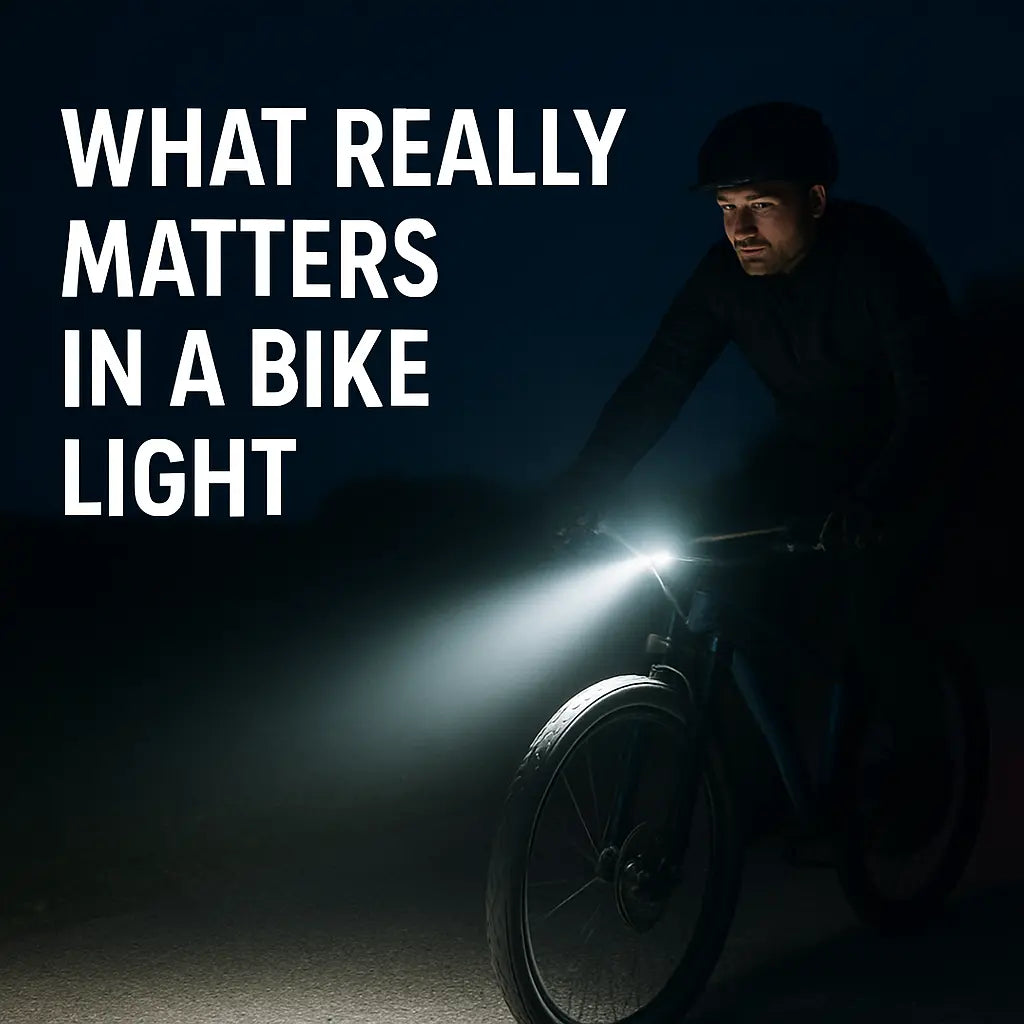Beginner’s Guide to Cycling Gear: Easy Tips for New Riders
Cycling is not only an eco-friendly way to get around but also a fantastic way to stay fit. However, if you're new to cycling, navigating the vast array of gear options can be overwhelming. This guide will walk you through the essential gear every beginner needs, common mistakes to avoid, and some practical tips to help you get started on the right foot.
Must-Have Gear: Essential Cycling Equipment for Beginners
-
Helmet
A helmet is the most important piece of gear for any cyclist. It protects your head and can greatly reduce the risk of injury in case of an accident. Make sure to choose a certified helmet that fits well—snug but not too tight. -
Bike Lights
Whether you’re cycling during the day or at night, front and rear lights are crucial. Front lights help you see the road ahead, especially in low-light conditions, while rear lights make you more visible to drivers. Opt for lights with multiple brightness settings and flashing modes, such as 600 to 1000-lumen smart lights, to suit different riding environments. -
Cycling Gloves
Gloves protect your hands from blisters and provide extra grip on the handlebars. They also offer some protection in case of a fall. Look for breathable, non-slip gloves to keep your hands comfortable and secure. -
Cycling Apparel
Proper cycling clothing can significantly improve comfort, especially on longer rides. Choose breathable, moisture-wicking materials to keep you dry. Padded cycling shorts are a must—they reduce friction and make your ride more comfortable. -
Water Bottle and Cage
Staying hydrated while cycling is essential. A water bottle cage attached to your bike frame allows you to easily grab a drink while on the move, preventing dehydration and fatigue. -
Multi-Tool Kit
A compact multi-tool kit can help you handle minor issues on the road, like adjusting your seat height or fixing a chain. A good kit typically includes Allen wrenches, tire levers, and a mini pump, all in a small, portable package.
Common Mistakes: Errors Beginners Often Make When Choosing Gear
-
Overlooking Helmet Quality
Some beginners think any helmet will do, but quality and fit are crucial. A poorly fitting or low-quality helmet won’t provide adequate protection in an accident. Always invest in a high-quality, certified helmet. -
Overbuying Gear
Many beginners go overboard and purchase a ton of expensive gear they don't actually need. It’s better to start with the basics and add more specialized equipment as you gain experience and understand your riding needs better. -
Ignoring the Importance of Bike Lights
Some new cyclists only use bike lights at night, but they’re equally important during the day, especially in low-visibility conditions like fog or tunnels. Daytime running lights significantly improve your visibility to other road users. -
Prioritizing Style Over Comfort
New riders often choose gear based on how it looks rather than how it feels. Comfort should be your top priority, especially when it comes to clothing and gloves. A comfortable ride is a safer and more enjoyable one.
Practical Tips: How to Develop Good Cycling Gear Habits from the Start
-
Start with the Basics
Don’t rush to buy every piece of gear available. Start with essential items like a helmet, lights, gloves, and basic apparel. As you become more experienced, you can gradually add to your collection based on your specific needs. -
Quality Over Quantity
It’s better to invest in a few high-quality items than to buy a lot of cheaper gear. Quality gear is more durable and offers better performance, which will enhance your overall cycling experience. -
Regular Maintenance
Develop a habit of regularly checking and maintaining your gear to ensure it’s always in good condition. For example, check your helmet for cracks, make sure your lights are fully charged, and ensure your multi-tool kit is complete and ready to use. -
Listen to Your Body
Pay attention to how your body feels when using new gear. If you experience discomfort or pain, it may be a sign that your gear isn’t fitting properly or isn’t suitable for your body type. Don’t hesitate to make adjustments or switch to a different product. -
Learn from Experienced Cyclists
Seek advice from seasoned cyclists. They can provide valuable insights into what gear works best and share tips that you won’t find in a manual. Learning from their experience can help you avoid common pitfalls and make more informed choices.
With this guide, you should now have a clearer understanding of what cycling gear you need as a beginner. The right gear not only enhances your safety but also makes your rides more enjoyable. Remember to start with the basics, prioritize comfort, and gradually build your gear collection as you gain more experience. Happy riding!
